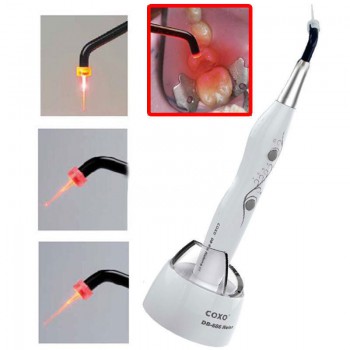Air polishing units typically generate a stream of pressurized air, carrying specially graded particles of a mild soluble abrasive, such as sodium bicarbonate. The abrasive is directed, in the presence of a stream of water, at a tooth surface to be cleaned. The mixture of water and powderladed stream occurs on the tooth surface and forms a “slurry” that is responsible for the cleaning action.
Rapid and simple plaque and debris removal allows the orthodontist to work in a clean esthetic field. The remnants of recent meals or in-between snacks need no longer waste valuable chairside time. No need to set up a hygiene appointment, a few moments with the Jet polisher 2000 is all that it takes to clean the field.
Frequent cleaning with a dental air polisher resulted in a greater reduction in gingival bleeding and marginal redness compared with pumice and rubber cup technique. This was attributed to the more thorough removal of plaque. It is virtually impossible to adequately adequately clean around fixed appliances using a rubber cup technique. The Jet polisher 2000 is an invaluable aid in the prevention of enamel decalcification around orthodontic appliances.
More recent technology produces a slurry by introducing the water stream into the powder-laden air stream, within the spray head at a critical moment, to produce a fully homogeneous stream that is emitted from a single nozzle. This stream technology configuration has not only been shown to prevent nozzle clogging by preventing the buildup of deposits, but also results in a much more efficient cleaning action because the slurry is formed prior to emission.
Air polishing devices were originally designed to be standalone tabletop units. Air polishing devices are used routinely in general dental practice for plaque and stain removal and for every situation when enamel is cleaned, such as prior to bonding procedures.
Air polishing has been compared to scaling and rubber-cup polishing for efficiency and effectiveness of stain and plaque removal. The literature overwhelmingly supports the use of the air polisher as an efficient and effective means of removing extrinsic stain and plaque from tooth surfaces. Air polishing requires less time than traditional polishing methods and removes stain three times as fast as scaling with comers. In addition, less fatigue to the operator has been mentioned as an important benefit of air polishing.
